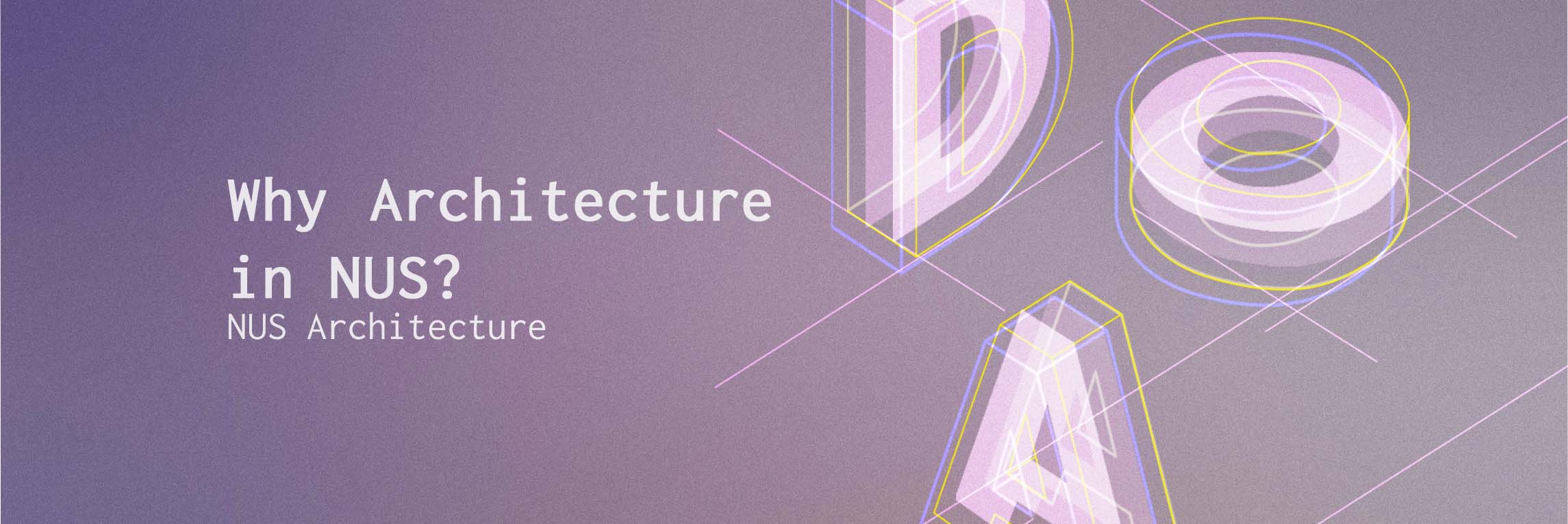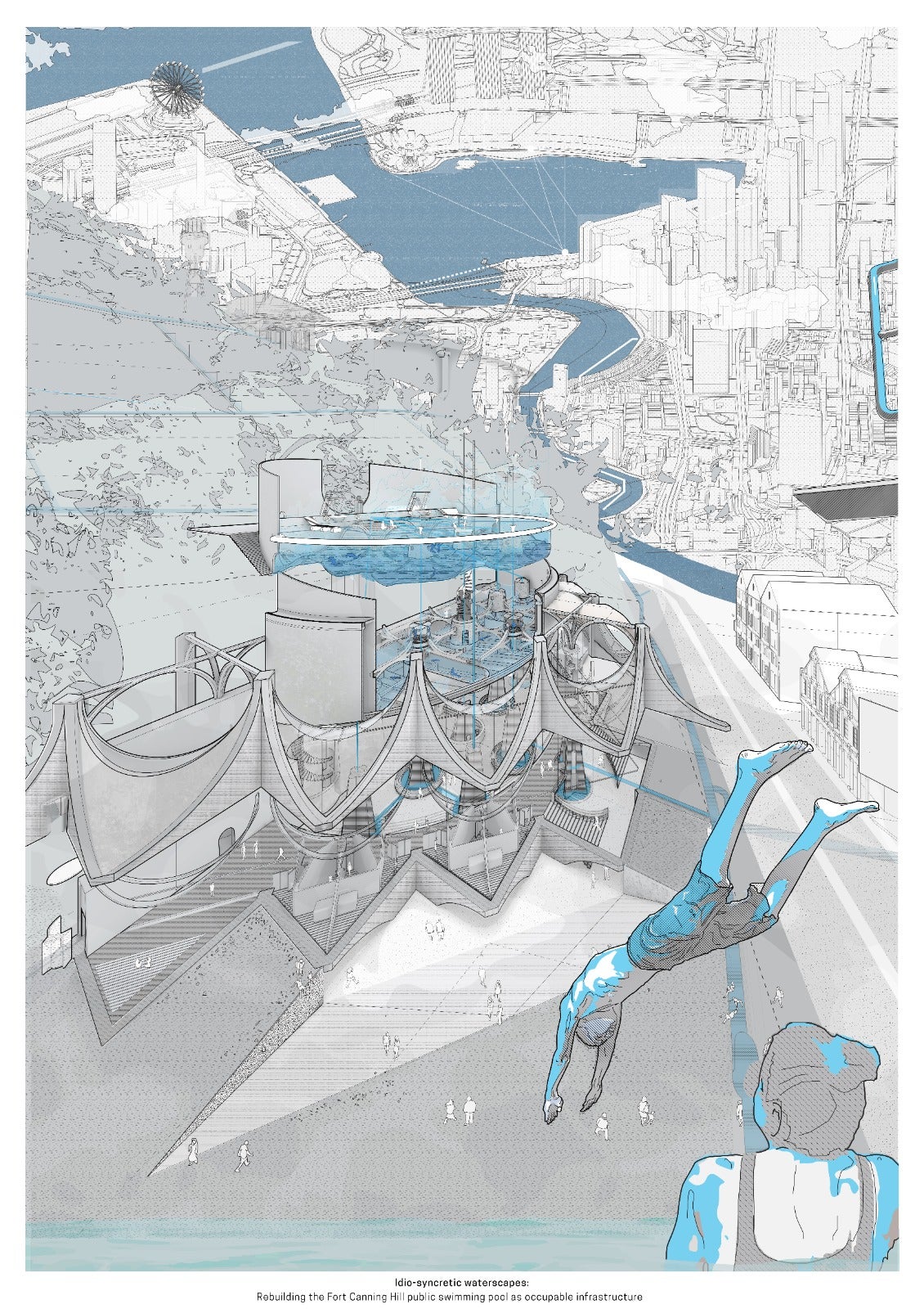Architecture E-Open House 2023



AY18/19 M(Arch) 2 Final Review, Thesis Advisor: A/P Erik L’Heureux.
We have a unique position in Asia with access to a top-ranked university, and connections to the best architects, designers, and academics globally.

M.Arch 1 Final Review, Studio Tutor: Prof CJ Lim (Ong Siew May Visiting Professor from Bartlett School of Architecture, UCL).
M. Arch 2 Interim Review Clip. See full video at our “Videos” page.

Our international faculty comprises of 42 full-time members, and over 20 adjunct professors, lecturers and tutors from 14 different nationalities. Their research interests are organised into 5 clusters: design technologies; research by design; history, theory and criticism; urban studies; and landscape.

City Exhibition 2019 in URA.
We have 800 students from over 15 nationalities. The works of our students and faculty go places in exhibitions all over the world: in Singapore’s National Design Centre and URA galleries; the Venice Architecture Biennale; the Aedes Gallery in Berlin, just to name a few. Our alumni continue to make cutting-edge work; we have produced 10 President Design Award winners – the most prestigious award for designers in Singapore.


Badabing Badaboom (Archiprix 2017 Winner): Jason Tan, M.Arch 2 Thesis. Advisor: A/P Erik L’Heureux.
NUS Architecture rethinks how architecture can be responsive to the tropics in ways which are imaginative, sustainable and surprising. The tropics is the epicenter of the world’s crops and resources. We use architecture to shape our climatic conditions and resources; to create conditions that cultivate societies and cultures.
Connecting from theory to the real world, we focus on topics of climate change, construction, urbanism, conservation, social good, new technologies, and translational research and practice.

Anticipatory Archipelagos (Special Mention, “Innovation and Architecture for the Sea” Award, Fondation Jacques Rougerie, 2016): Shaunice Ten, M.Arch 2 Thesis. Advisor: A/P Lilian Chee

40 Trees and their Architecture: Sarah Lee, M.Arch 2 Thesis. Advisor: A/P Lilian Chee

Idio-syncretic Waterscapes (RIBA Part 1 Nominee): Goi Yong Chern, B.A(Arch) 3, Studio Tutor: A/P Fung John Chye.


Hiraenoki Village, Fukuoka Prefecture, Japan. M.Arch 1 Site Visit, Studio Tutor: Tsuto Sakamoto.
Our graduates are trained for agility, to think on their feet, to be able to adapt, thrive and grow in all kinds of circumstances.

Studio Environment – Learning through observing, making, asking and talking.
At NUS Architecture, a studio-based, hands-on learning approach will enable students to develop a range of skills necessary for a future both inside, and outside, of design practice. A design education provides a holistic skill set for entering a future workforce which would require creativity, independence, entrepreneurial skills, versatility & ability to collaborate across many disciplines.
Sense of Place: Architectural Conservation Field School, 2018.
Thus, at NUS Architecture, learning is collaborative – designing for the built environment is multi-disciplinary, combining the sciences, ecology, politics, social sciences, technology to form solutions. Learning also takes place outside of studio environment: through workshops, service learning, exhibitions, competitions and field trips (both local and international). In just 2019/2020, NUS Architecture students travelled to Hong Kong, Taipei, Seoul, Chiangmai, London, Tokyo, Myanmar, Jakarta, and New York.
From the range of inter-disciplinary skills acquired during the undergrad study, students can cultivate their expertise in the graduate programs we offer: Master of Architecture (M.Arch); Master of Landscape Architecture (MLA) ; Master of Urban Planning (MUP); Master of Urban Design (MAUD); Master of Integrated Sustainable Design (MSc. ISD); or another relevant graduate course at NUS or elsewhere.

Pathway Map at the Department of Architecture.
A design education multiplies future possibilities: professional architecture-related opportunities expand from architects, landscape architects, urban planners and designers, to building historians and conservation experts.
Also possible are a range of expertise in the design industry, including lighting and acoustic designers, interior and spatial designers, fashion designers, entrepreneurs, UI/UX (user interface & user experience) designers, environmental designers, product designers, branding & graphic designers, and game designers.
Other career possibilities that are related in the wider field of design, architecture and the built environment include design researchers, design educators, writers, photographers, film makers, curators, and creative directors. At NUS Architecture, critical and limitless possibilities abound.
NUS Architecture. Leading Asia. Designing your future.